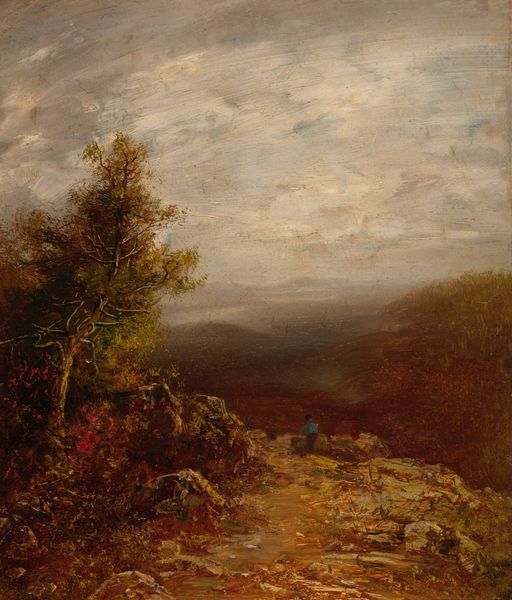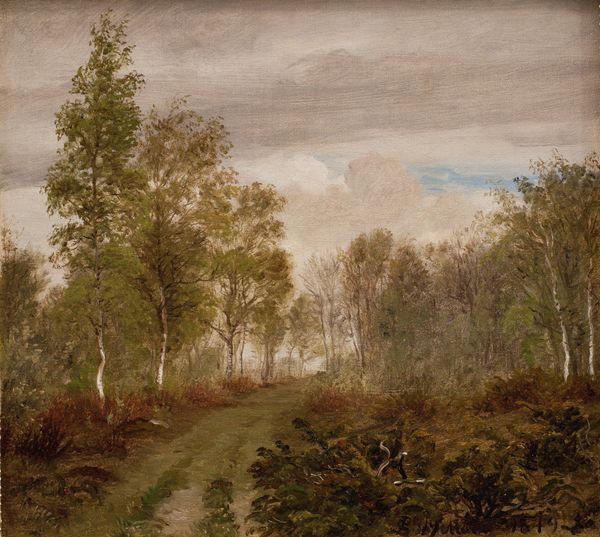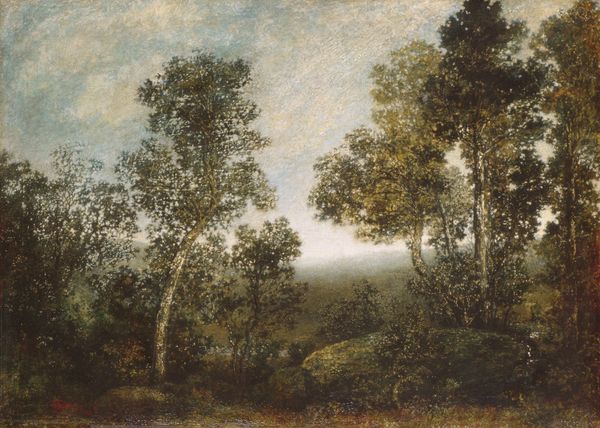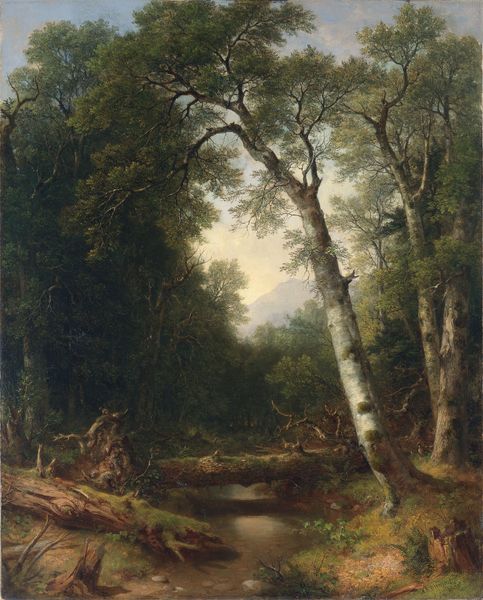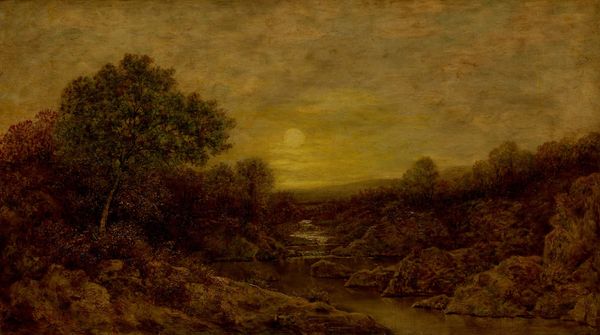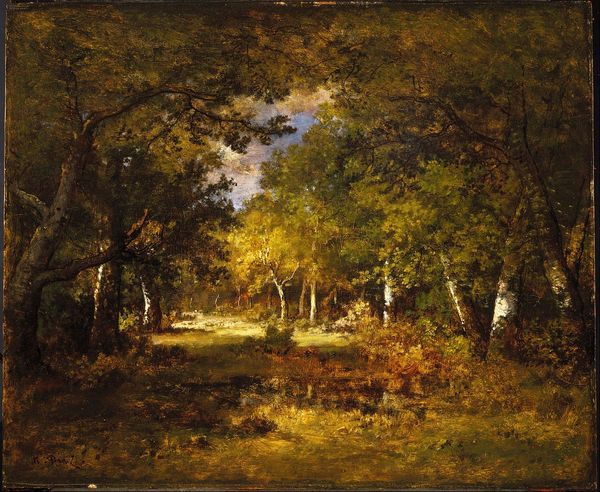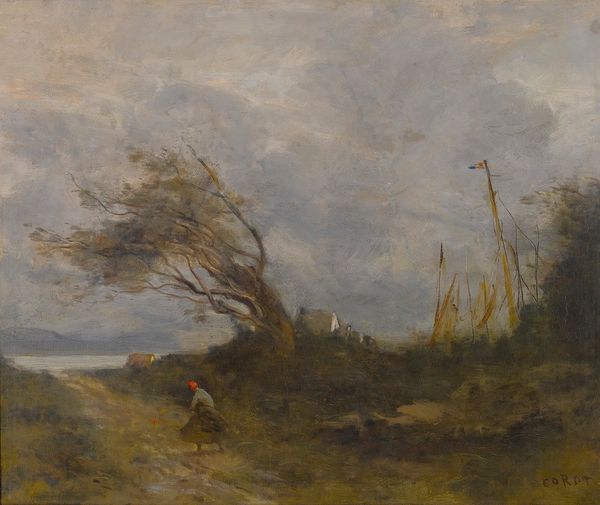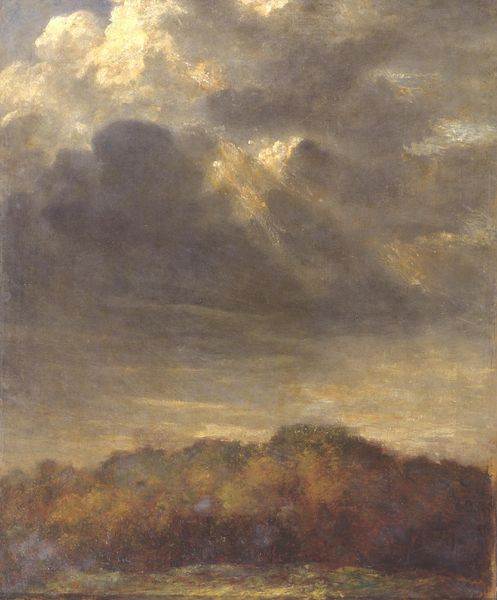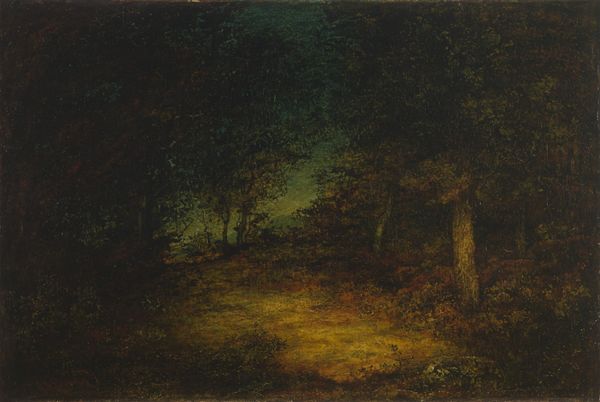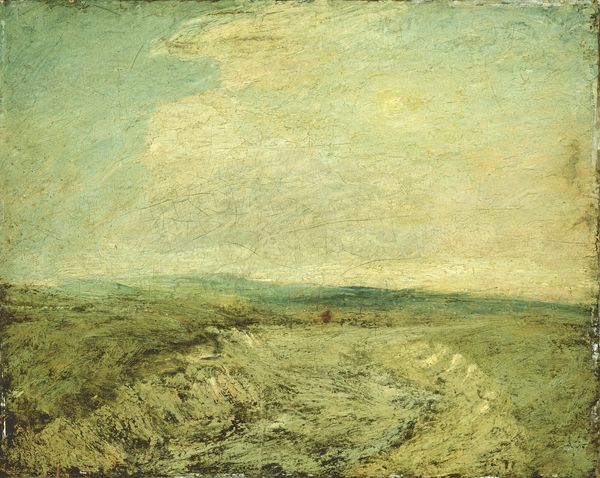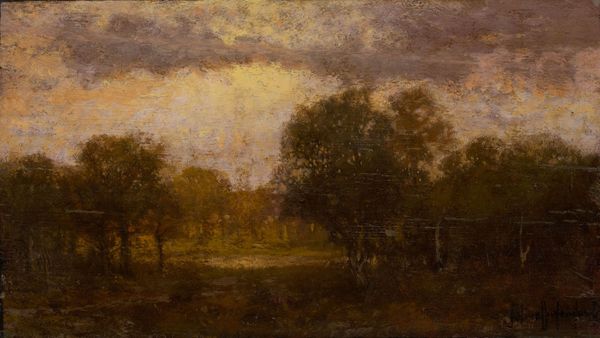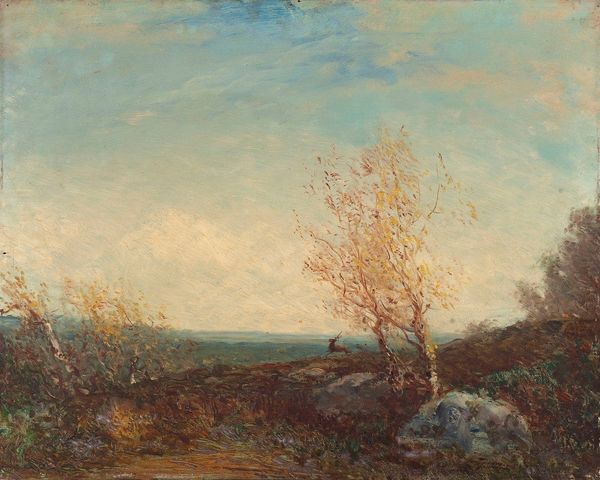
Copyright: Public domain
Curator: Ralph Blakelock’s "Pool in the Adirondacks," painted around 1875 and currently held at the Indianapolis Museum of Art, captures a seemingly quiet corner of the American landscape with the tools of oil on canvas. Editor: Mmm, it feels hushed, doesn't it? Like holding your breath in a mossy, shadowy place. The light's diffused, almost like the air itself is damp. I imagine the cool earthy smell as I'm looking. Curator: The materiality really dictates that effect. Consider Blakelock's technique— he builds up layer upon layer of paint, scraping some away, resulting in this wonderfully textured surface that scatters light and absorbs shadow in unpredictable ways. It almost dematerializes the landscape. Editor: Right, there's this palpable push-pull between the visible world and an almost dreamlike haziness. It teases at a sort of Romantic ideal but, also...I’m drawn to that fallen log, almost like the remnants of labor left in the wilds. I wonder what that implies? Curator: Interesting. I think there's also the important question of accessibility. This work, through Blakelock’s use of the Plein-air style, brought nature's grandness to broader audiences via art. Editor: That’s valid; but speaking just for myself, I sense something else there – beyond that mere accessibility – something yearning, almost mournful about it, which I personally love. Curator: Perhaps, or the simple realities of nineteenth-century American landscape, capturing a world being actively reshaped by resource extraction and expanding settlements. Editor: Perhaps both. It certainly stirs the heart and the mind. Curator: Well, no matter where one’s analysis lies, there's little arguing with the subtle visual power he crafted through manipulation of humble material, and to me, that is compelling. Editor: Indeed. An atmospheric echo captured in pigment, for us to unravel as time unfolds. It almost feels like Blakelock had foreseen its future interpretations, like this dialogue, right here.
Comments
No comments
Be the first to comment and join the conversation on the ultimate creative platform.
